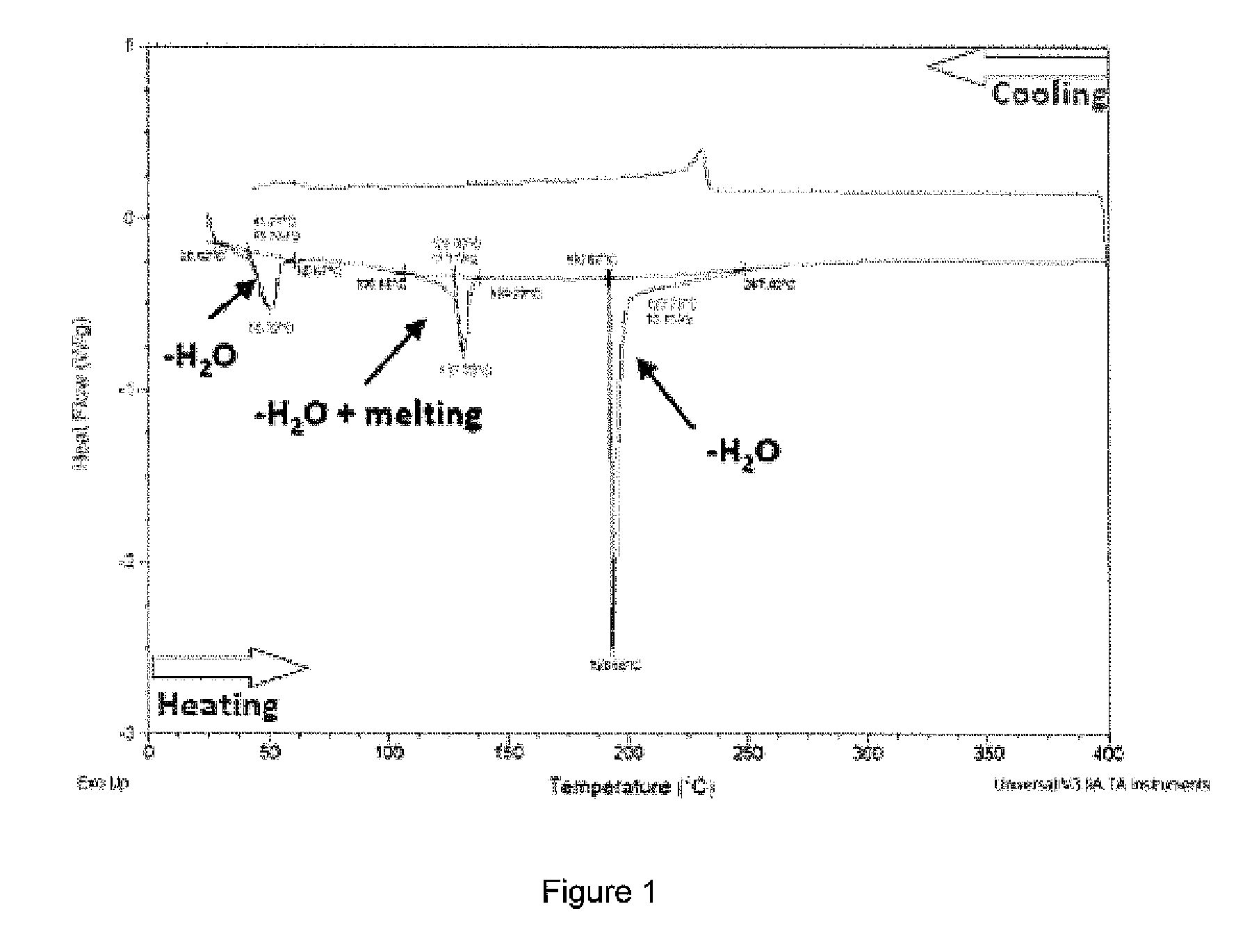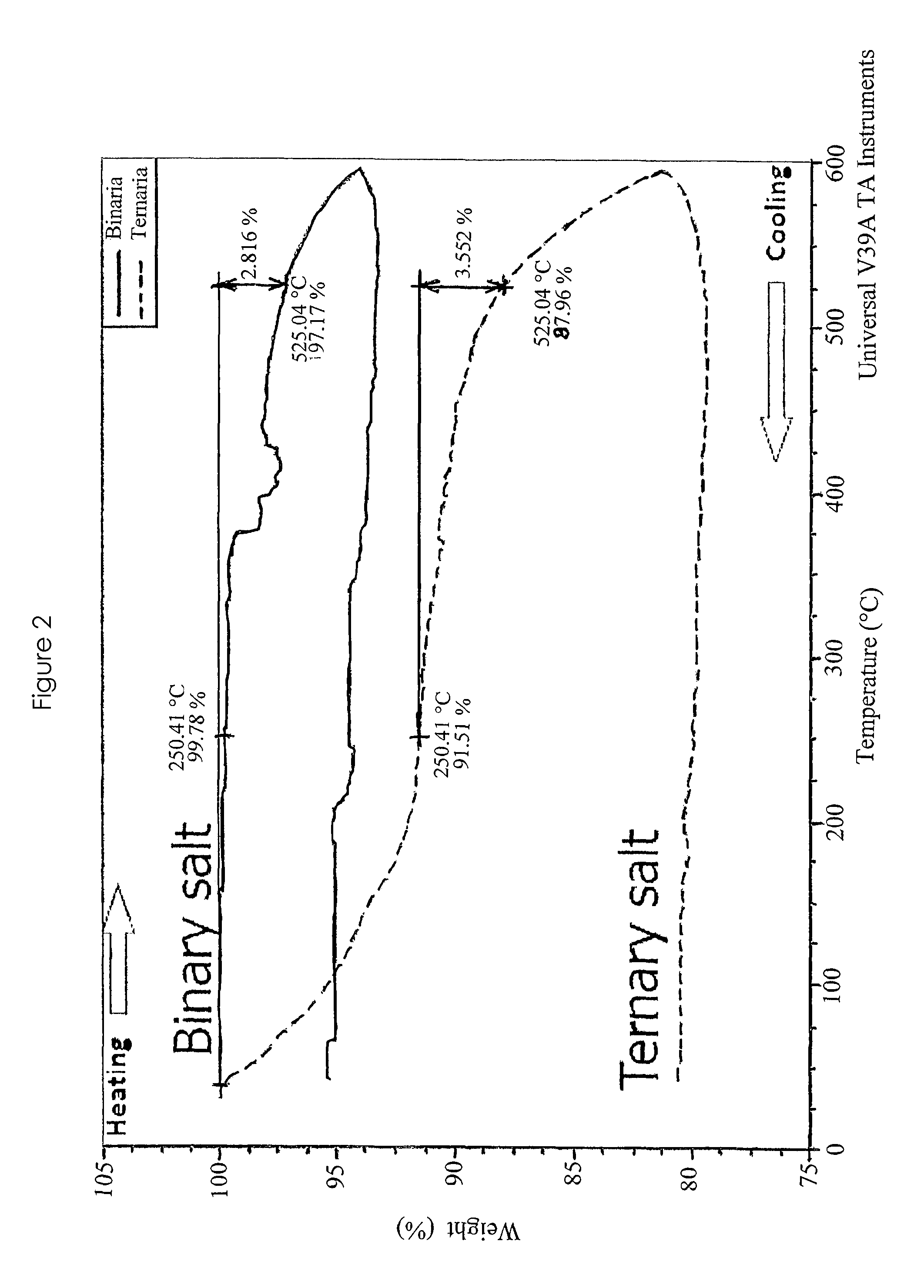Use of a calcium potassium nitrate salt for the manufacture of a heat transfer fluid
a technology of calcium potassium nitrate salt and heat transfer fluid, which is applied in the direction of heat-exchange elements, chemical apparatus and processes, etc., can solve the problems of high melting temperature (220° c), large energy consumption, and difficult handling, so as to avoid boiling large amounts of water, the effect of low melting point and less energy
- Summary
- Abstract
- Description
- Claims
- Application Information
AI Technical Summary
Benefits of technology
Problems solved by technology
Method used
Image
Examples
example 1
[0039]To obtain an eutectic ternary melt consisting of 42 weight % of Ca(NO3)2, 15 weight % of NaNO3 and 43 weight % of KNO3, 15 weight % of particulate NaNO3 (technical grade), 38 weight % of particulate KNO3 (technical grade) and 56 weight % of particulate Nitcal / K (Yara International SA, Oslo) was mixed in a laboratory scale mixer and heated to about 131° C., at which temperature the melting of the mixture started. All the water was evaporated at a temperature of about 250° C. The composition of Nitcal / K is 9.2 weight % KNO3, 74.5 weight % Ca(NO3)2 and 16.3 weight % of water.
[0040]A DSC diagram of the ternary mixture is shown in FIG. 1 showing the melting behaviour of the mixture.
[0041]A thermogravimetric analysis (TGA) of the ternary salt melt is shown in FIG. 2, in comparison with the commonly used binary melt (Solar Salt). It shows a decomposition temperature of 525° C. at a 3.5 weight loss, compared to a decomposition temperature of 525° C. at a 2.8 weight loss for the binary...
PUM
| Property | Measurement | Unit |
|---|---|---|
| weight % | aaaaa | aaaaa |
| weight % | aaaaa | aaaaa |
| weight % | aaaaa | aaaaa |
Abstract
Description
Claims
Application Information
 Login to View More
Login to View More - R&D
- Intellectual Property
- Life Sciences
- Materials
- Tech Scout
- Unparalleled Data Quality
- Higher Quality Content
- 60% Fewer Hallucinations
Browse by: Latest US Patents, China's latest patents, Technical Efficacy Thesaurus, Application Domain, Technology Topic, Popular Technical Reports.
© 2025 PatSnap. All rights reserved.Legal|Privacy policy|Modern Slavery Act Transparency Statement|Sitemap|About US| Contact US: help@patsnap.com


